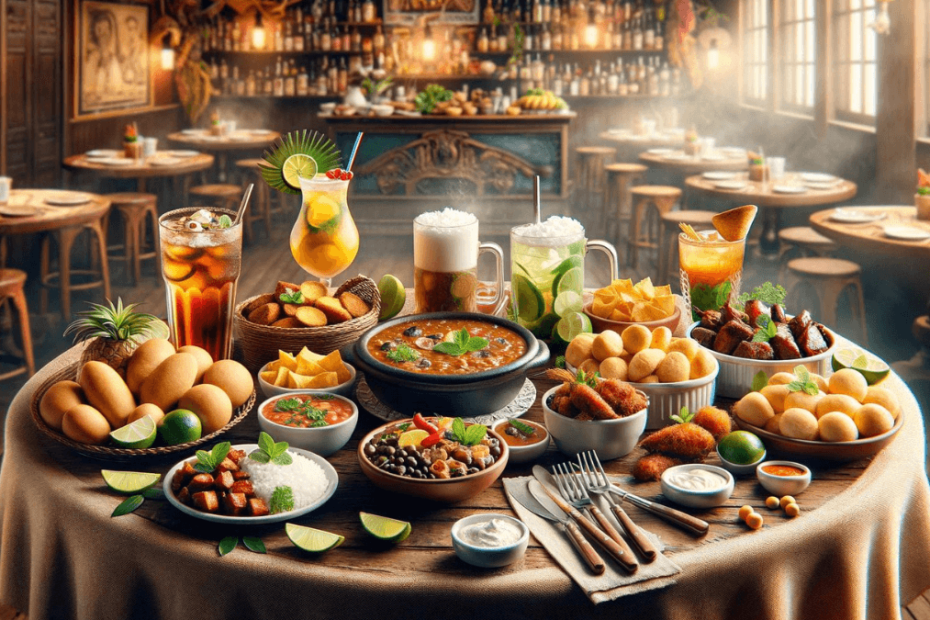- Food in Brazil is a diverse blend of indigenous, Portuguese, African, and global influences;
- Regional dishes vary widely, reflecting local cultures and histories;
- Brazil’s food is known for its hearty stews, unique street foods, and sweet treats;
- Brazilian beverages range from traditional cocktails to unique soft drinks;
- The cuisine is evolving, with international influences enriching its character.
Olá! Welcome to a vibrant journey through the heart of Brazil cuisine, a culinary landscape as diverse and colorful as the country itself.
Every bite of Brazilian food is like a carnival of flavors, where each region brings its own flair to the table.
From the hearty feijoada that warms your soul to the light and zesty açaí bowls that cool you down on a hot day, Brazilian food is about more than just sustenance – it’s about celebration, family, and the joy of life.
So, pull up a chair and let’s embark on this delicious adventure. Whether you’re a curious foodie or a seasoned traveler, there’s something in Brazilian cuisine that will capture your heart and tantalize your taste buds. Vamos lá! (Let’s go!)
Food in Brazil: Regional Varieties and Signature Dishes
Brazil’s vast size and diverse cultural background have given rise to a remarkable variety of regional cuisines. Each part of Brazil adds its own twist to the national palate, creating a rich tapestry of flavors and techniques.
Northern Brazil
In the North, the Amazon influences the cuisine deeply.
1 – Açaí
Explore the history and cultural significance of Açaí, a nutrient-rich berry central to Amazonian diets. Delve into traditional and modern ways Açaí is consumed, from energy bowls to savory fish pairings.
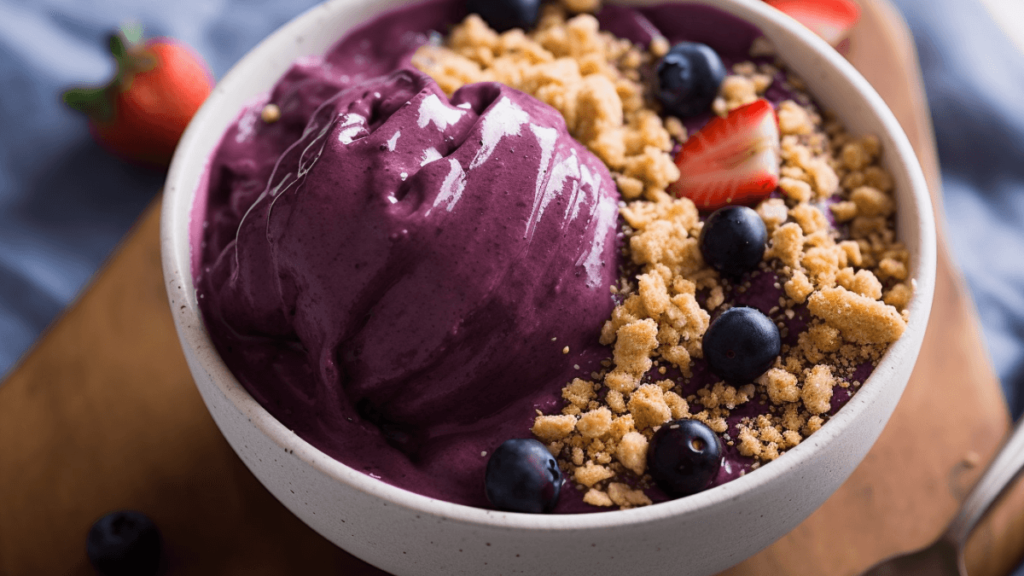
2 – Tacacá
Discover Tacacá, a unique soup with roots in indigenous cuisine. Understand its ingredients like jambu leaves and tucupi, and learn how it reflects Northern Brazil’s culinary identity.
Northeastern Brazil
The Northeast, with its African influences, is a world of flavors unto itself.
3 – Acarajé
Dive into the street food culture with Acarajé, a deep-fried delight. Understand its African heritage and how it represents Bahia’s gastronomy.
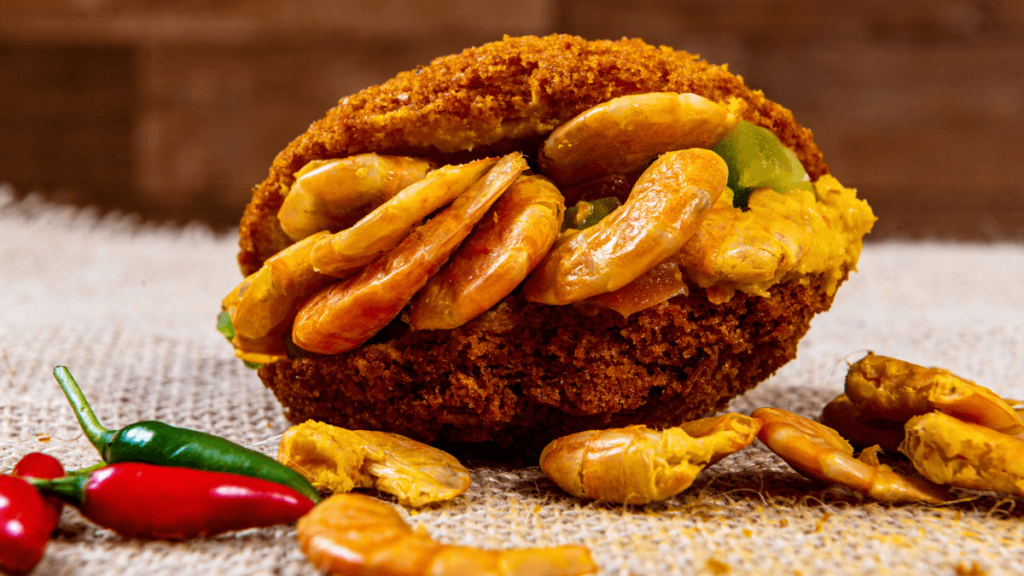
4 – Vatapá
Explore Vatapá’s rich flavors and history. This creamy dish combines African and Brazilian influences and is essential to the region’s culinary tapestry.
Southeastern Brazil
In the Southeast, you’ll find Brazil’s most internationally known dishes.
5 – Feijoada
Uncover the story behind Feijoada, the most popular Brazilian food. Learn about its colonial roots and how it symbolizes Brazilian cuisine’s multicultural nature.
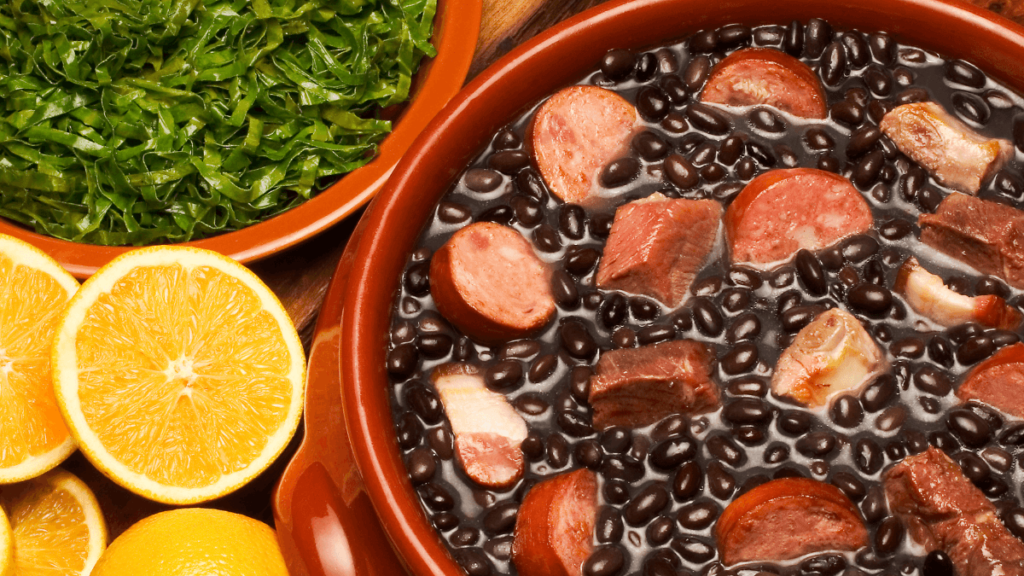
Plan your trip to Brazil
-
Find the cheapest flights -
Discover the best accommodation -
Explore this incredible country with the best experiences -
Stay connected at all times with an eSIM
6 – Pão de Queijo
Experience the simplicity and charm of Pão de Queijo, a cheesy bread snack. Discover its origins in Minas Gerais and its spread across Brazil and beyond.
7 – Brigadeiro
Indulge in Brigadeiro, a beloved Brazilian sweet made of condensed milk and chocolat.

Southern Brazil
8 – Churrasco (Brazilian Barbecue)
Delve into the tradition of Churrasco, the Southern Brazilian barbecue. Understand the gaucho culture’s influence and the art of grilling meats.
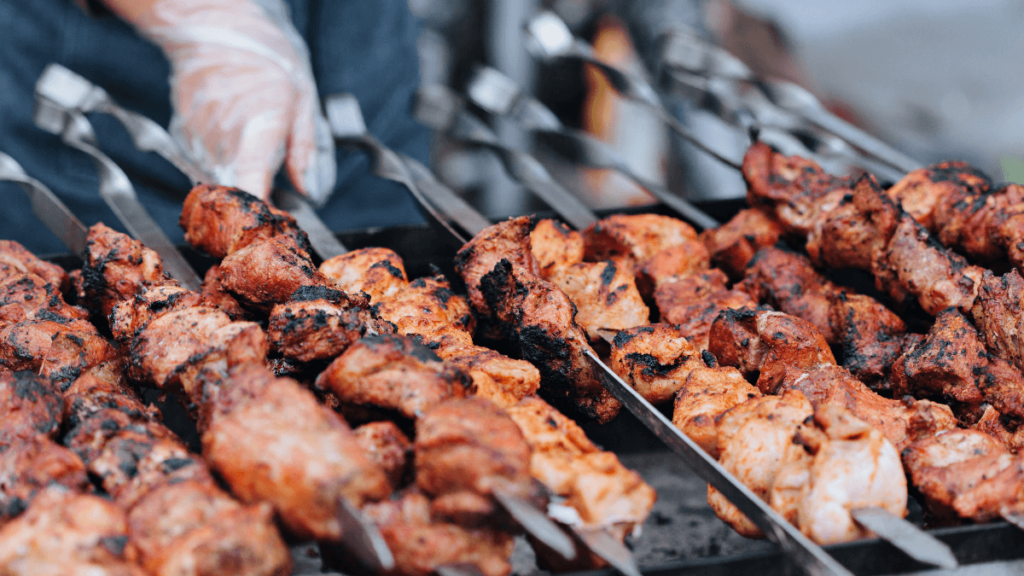
9 – Arroz Carreteiro
Learn about Arroz Carreteiro, a hearty rice dish. Discover how it originated from cowboy’s cuisine and evolved into a regional favorite.
Street Foods and Snacks
Brazilian street food is an essential part of the country’s culinary culture, offering a quick, delicious, and affordable way to experience a range of flavors.
Popular Street Foods
10 – Pastel
These are crispy turnovers, often filled with cheese, ground beef, or heart of palm. They’re a common sight at street markets, perfectly crunchy on the outside with a flavorful filling.
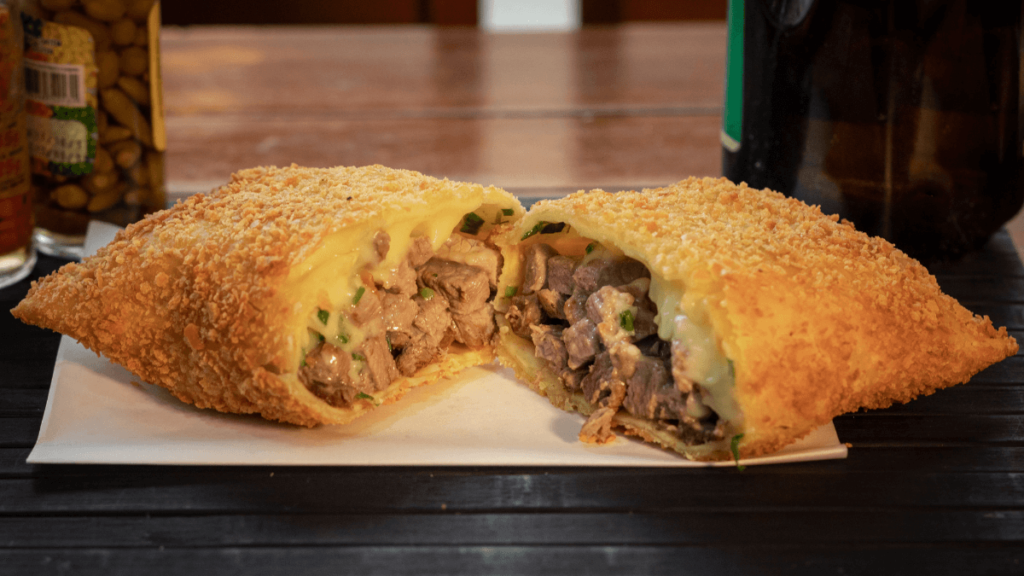
11 – Coxinha
Shaped like a drumstick, these are delightful snacks made of shredded chicken enveloped in dough, then breaded and fried. A favorite among Brazilians of all ages.
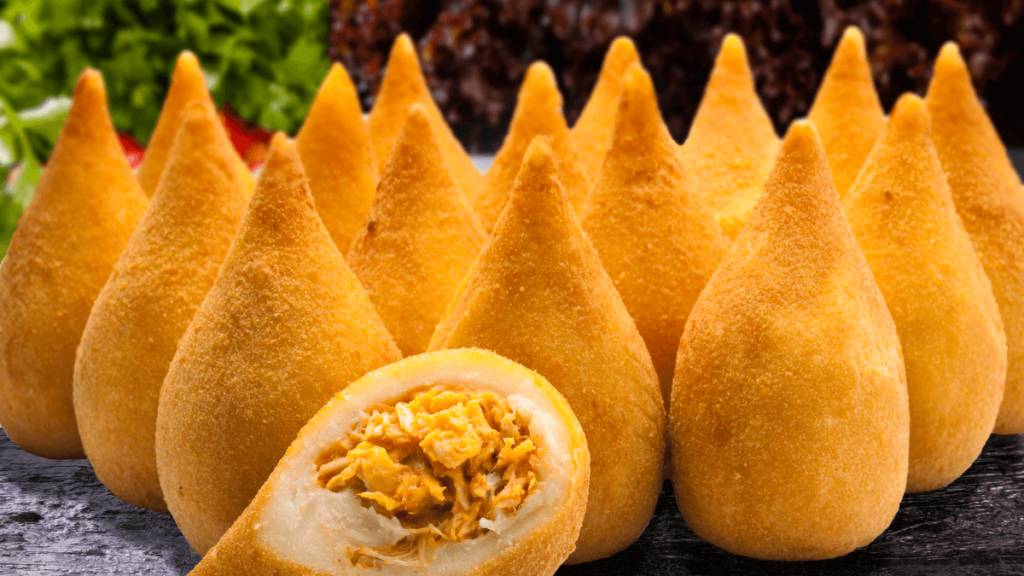
12 – Empada
Similar to pies, empadas are small, baked, and come with various fillings like chicken, shrimp, or heart of palm. They’re the perfect snack on the go.
Sweet Treats
13 – Beijinho de Coco
Translating to “little coconut kiss,” these are similar to brigadeiros but made with coconut and often topped with a whole clove.
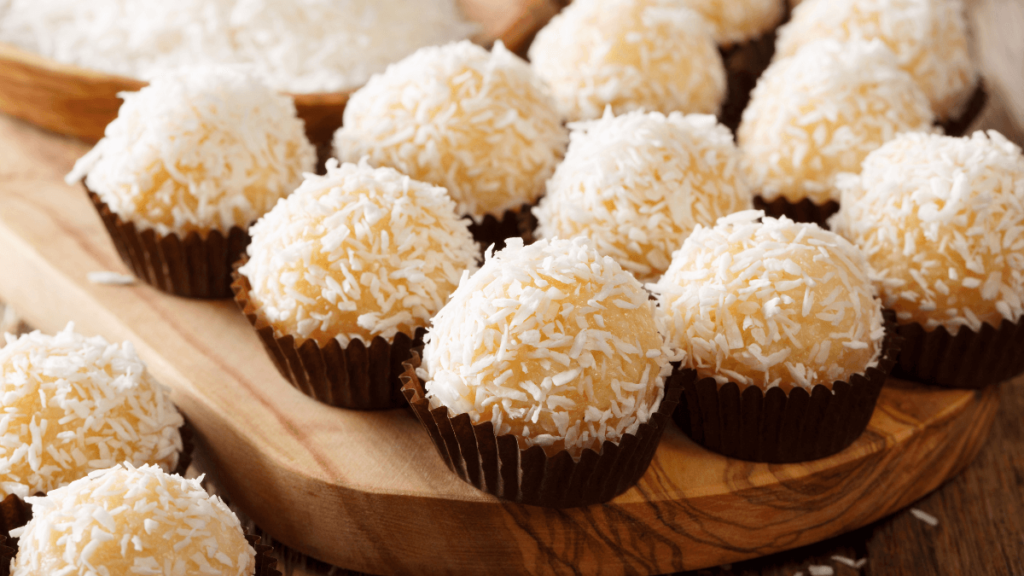
14 – Quindim
A glossy, yellow dessert made primarily from egg yolks, sugar, and coconut, quindim is both rich and delicious, often served in small, round shapes.
Traditional Brazilian Meals
Brazilian cuisine offers a variety of traditional meals that are both hearty and rich in flavor, perfect for family gatherings or special occasions.
Main Courses
15 – Feijoada
Often referred to as Brazil’s national dish, feijoada is a robust stew of black beans and various cuts of pork and beef. It’s traditionally served with rice, orange slices, farofa (toasted cassava flour), and couve (collard greens).
16 – Moqueca
This is a fragrant fish or seafood stew cooked in coconut milk, tomatoes, onions, and coriander. It’s usually served with rice and farofa.
17 – Empadão
A savory pie filled with chicken, hearts of palm, olives, and corn. It’s a comforting dish, perfect for a family lunch.
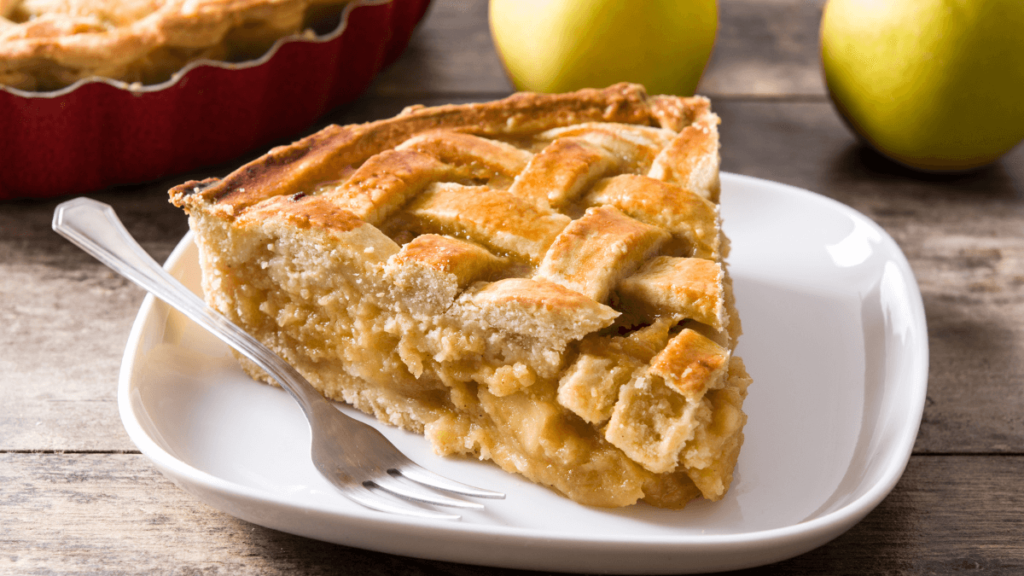
Side Dishes
18 – Farofa
A versatile and beloved side dish in Brazil, farofa is made from cassava flour sautéed with butter, onions, and sometimes bacon. It’s often used as a topping for beans and meats.
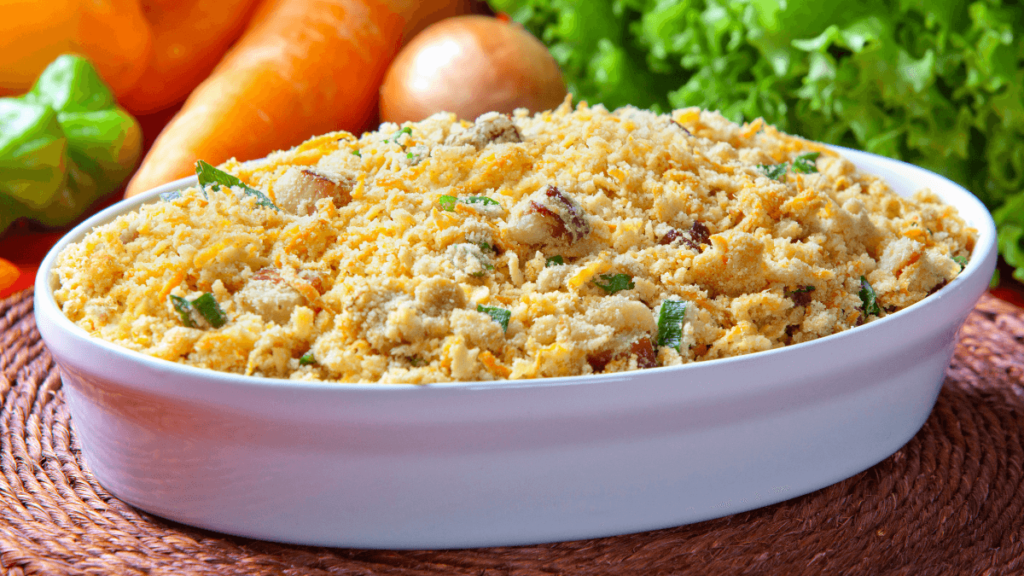
19 – Mandioca Frita
Also known as cassava fries, these are a popular side dish. They’re crispy on the outside and soft on the inside, often served with a sprinkle of salt and a squeeze of lime.
Desserts and Sweets
Brazilian desserts and sweets offer a delightful end to any meal, combining traditional recipes with local ingredients.
29 – Romeu e Julieta
A simple yet beloved dessert, it pairs guava paste with Minas cheese, creating a perfect balance of sweet and savory.
30 – Pudim de Leite
Similar to flan, this creamy milk pudding is a favorite in Brazilian households. It’s smooth, sweet, and often served with caramel sauce.
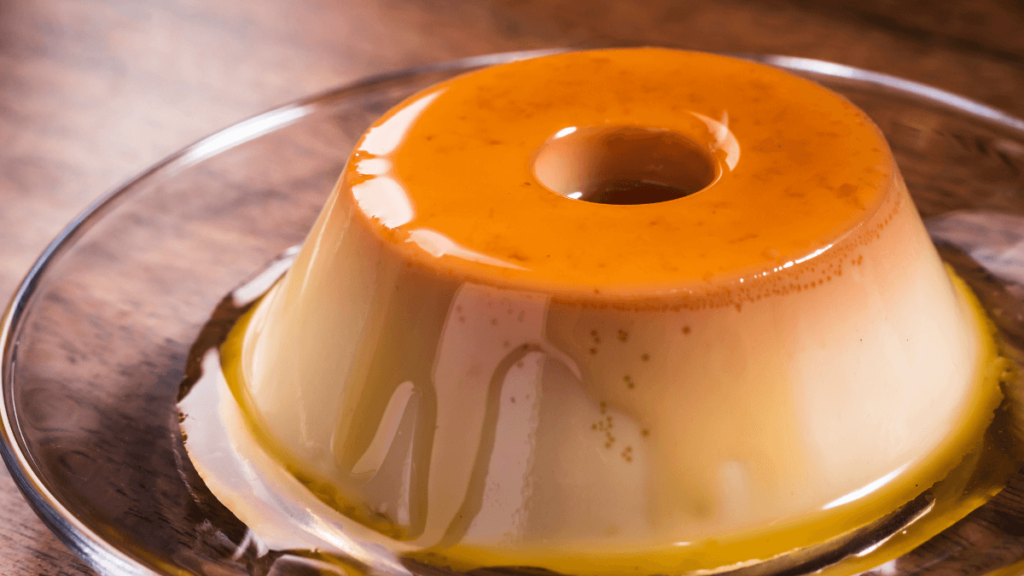
31 – Canjica
A traditional dish made from white corn, often served during Festas Juninas (June Festivals). It’s sweetened with sugar and flavored with cinnamon and cloves.
Brazilian Beverages
Brazil offers a delightful array of beverages, ranging from refreshing non-alcoholic options to spirited alcoholic drinks.
Alcoholic Drinks
20 – Cachaça
This is Brazil’s most famous liquor, a distilled spirit made from sugarcane juice. It’s strong, flavorful, and the base for many Brazilian cocktails.
21 – Caipirinha
Brazil’s national cocktail, made with cachaça, sugar, and lime. It’s refreshing, tangy, and embodies the spirit of Brazilian hospitality and celebration.
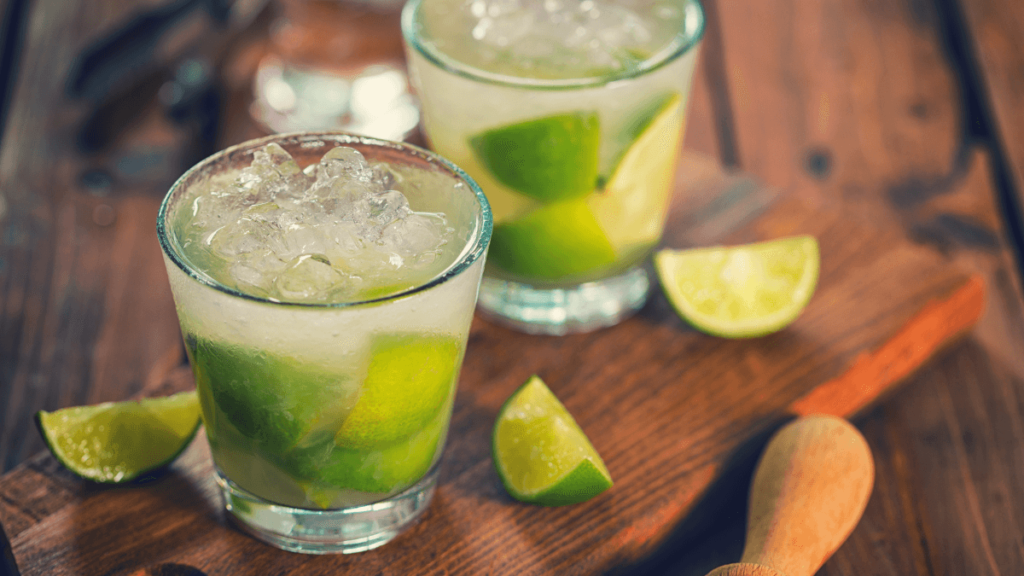
Also See | Brazil Beach Ipanema: Discover One of The Most Famous Brazilian Attractions
Non-Alcoholic Drinks
22 – Guaraná
A popular soft drink in Brazil, made from the guaraná fruit. It’s known for its natural caffeine content and distinct flavor.
23 – Caldo de Cana
Fresh sugarcane juice, often enjoyed at street markets. It’s sweet, refreshing, and a perfect treat on a hot day.
Fusion and International Influence
Brazil’s cuisine is as diverse as its population, reflecting a melting pot of cultures and flavors from around the world.
Japanese Influence
Brazil is home to the largest Japanese community outside Japan.
25 – Sushi and Temaki
This influence is evident in the popularity of Sushi and Temaki in Brazil. These dishes have been embraced and adapted, often featuring tropical fruits and local flavors, representing a unique fusion of Japanese and Brazilian tastes.
European Influence
The European influence on Brazilian cuisine is significant, especially from Italy, Germany and Portugal
26 – Rondeli
A delightful and popular dish, reminiscent of Italian cuisine but with a distinct Brazilian twist. It is essentially a type of rolled pasta, quite similar to Italian cannelloni.
27 – Bolinho de Bacalhau
A Portuguese-inspired snack, these are salt cod fritters, crispy on the outside and fluffy on the inside, a staple in Brazilian bars and restaurants.
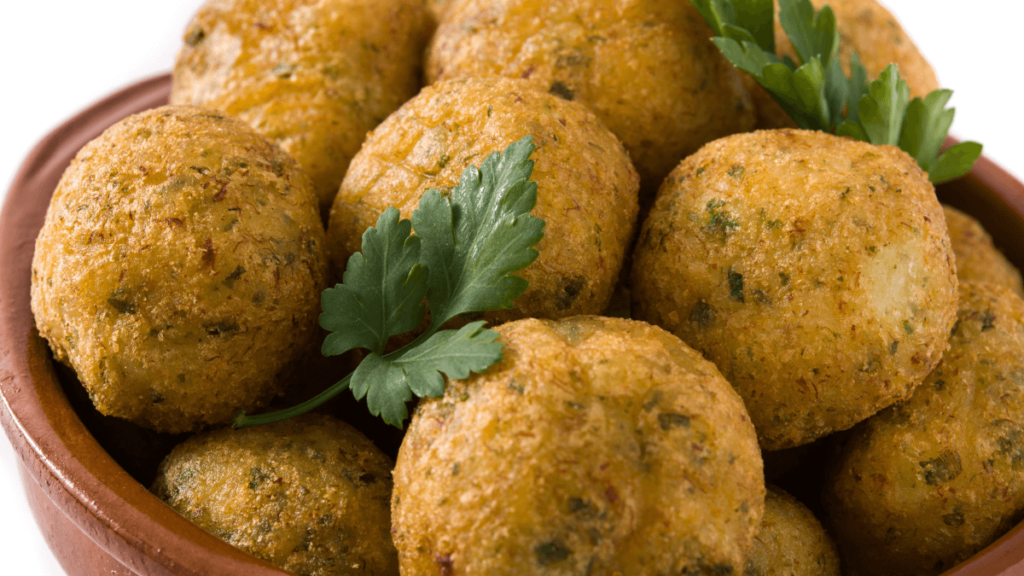
28 – Cuca
A popular cake, originally brought by German immigrants. It is similar to a coffee cake and is characterized by its crumbly topping, which often includes cinnamon and sugar.
Brazilian Food in Global Context
Brazilian cuisine has made a significant impact globally, with its flavors and dishes finding a place in various cultures.
- Adaptation of Brazilian Dishes Abroad: Brazilian dishes have been adapted in many countries, with ingredients and cooking methods tweaked to suit local tastes while maintaining their Brazilian essence.
- Influence on Global Food Trends: Brazilian ingredients like açaí and cassava, as well as dishes like churrasco, have influenced global food trends, introducing the world to the flavors and culinary practices of Brazil.
The spread and adaptation of Brazilian cuisine around the world highlight its versatility and the growing interest in the diverse and rich culinary heritage of Brazil.
Savoring the Journey: Reflecting on Brazil’s Culinary Tapestry
Our culinary journey through Brazil reveals a cuisine that is as vibrant and diverse as the country itself.
From the rich flavors of feijoada in the Southeast to the fresh açaí bowls of the North, each region contributes its unique taste to the national palate.
Street foods like pastels and coxinhas offer a glimpse into Brazil’s everyday life, while traditional desserts like pudim de leite and brigadeiros speak to the nation’s sweet tooth.
Brazilian cuisine is not static; it’s constantly evolving, absorbing influences from around the world while maintaining its unique character.
This dynamic nature reflects the spirit of Brazil itself—a place of warmth, diversity, and continual innovation in the culinary arts.
As Brazil continues to influence global food trends, its cuisine remains a delightful exploration for food lovers everywhere.
Did you like our content, do you want to get to know our country?! Discover the best experiences to live in Brazil!
